|

On eBay Now...
1918 WWI Jefferson Barracks MO Yard Long Photo Infantry Soldiers Officers Swords For Sale

When you click on links to various merchants on this site and make a purchase, this can result in this site earning a commission. Affiliate programs and affiliations include, but are not limited to, the eBay Partner Network.

1918 WWI Jefferson Barracks MO Yard Long Photo Infantry Soldiers Officers Swords:
$100.00
5 Nov 1918 WWI Jefferson Barracks MO Yard Long Sepia Photo Infantry Soldiers Officers Swords
This Photo Originated from the LEMP BREWERY FAMILY ESTATE in St. Louis
Photographer: E.A. Maserang
34"L x 6"W
Condition:significant tears - a good Photoshop Retouch/Restoration Project for a Skilled Artist
The Jefferson Barracks Military Post is located on the Mississippi River at Lemay, Missouri, south of St. Louis. It was an important and active U.S. Army installation from 1826 through 1946. It is the oldest operating U.S. military installation west of the Mississippi River. During World War II, Jefferson Barracks was a major reception center for U.S. troops being drafted into the military. It also served as an important basic training site for the Army. It is now used as a base for the Army and Air National Guard.
Provenance:This photo originated from the estate ofJohn Frederick Lemp, Sr.(1894-1977) the son ofJohn Emil andCaroline Emilie (Zeltman) Lemp of Boise, Idaho.
John Frederick Lempserved in theChemical Warfare Service Unit of the US Army during WWI and then,worked in private industry for the chemical division ofMallinckrodt, especially for the development of uranium for the Manhattan District Atom Bomb Development Program during WWII.
Johnwas the son ofJohn Emil andCaroline Emilie (Zeltman) Lemp of Boise, Idaho.John Emil and his brother, Louis, were watchmakers.John Frederick Lemp(1894-1977)and his wife Norma Frances (Stukenberg)were residents of Alton, Illinois.
Background:
Edward Mallinckrodt, Jr., was an Industrialist, scientist, and philanthropist in St. Louis. He Served as Mallinckrodt Chemical Works director (1901-1965), vice-president (1918-1928), and board chairman (1928-1965).
In April 1942Edward Mallinckrodtwas approached by a contingent from theMetallurgical Laboratory of the Manhattan Project, particularly byArthur Holly Compton. Compton urgently needed a source of refined uranium. The chemical company already worked with ether, which could theoretically be used in a purifying process but which posed its own handling risks. With extreme haste and with tight security restrictions, Mallinckrodt developed a novel technique from theoretical concept, to experiment, to full production. The company submitted test materials by mid-May, supplied the material for the first self-sustaining reaction in December, and had satisfied the project's entire order of the first sixty tons before the contract with the government was even signed. From 1942 to 1957, Mallinckrodt processed uranium ore into weapons-grade uranium at a factory north of downtown St. Louis.
The discovery of nuclear fission in 1938 made the development of an atomic bomb a theoretical possibility. Fears that a German atomic bomb project would develop atomic weapons first, especially among scientists who were refugees from Nazi Germany and other fascist countries, were expressed in the Einstein–Szilard letter to Roosevelt in 1939. This prompted preliminary research in the United States in late 1939. Progress was slow until the arrival of the British MAUD Committee report in late 1941, which indicated that only 5 to 10 kilograms of isotopically-pure uranium-235 were needed for a bomb instead of tons of natural uranium and a neutron moderator like heavy water. Consequently, the work was accelerated, first as a pilot program, and finally in the agreement by Roosevelt to turn the work over the U.S. Army Corps of Engineers to construct the production facilities necessary to produce uranium-235 and plutonium-239. This work was consolidated within the newly created Manhattan Engineer District, which became better known as the Manhattan Project, eventually under the direction of Major General Leslie R. Groves, Jr. The work of the Manhattan Project took place at dozens of sites across the United States, and even some outside of its borders. It would ultimately cost over US$2 billion and employ over 125,000 people simultaneously at its peak. Groves appointed J. Robert Oppenheimer to organize and head the project's Los Alamos Laboratory in New Mexico, where bomb design work was carried out. Two different types of bombs were eventually developed: a gun-type fission weapon that used uranium-235, called Little Boy, and a more complex implosion-type nuclear weapon that used plutonium-239, called Fat Man.
TheLittle BoyA-Bombkilled between 90,000 and 146,000 people in Hiroshima which was selected as a target because it was considered an important army depot and port of embarkation in the middle of an urban industrial area.
During World War II,Arthur Compton was a key figure in the Manhattan Projectthat developed the first nuclear weapons. His reports were important in launching the project. In 1942, he became head of the Metallurgical Laboratory, with responsibility for producing nuclear reactors to convert uranium into plutonium, finding ways to separate the plutonium from the uranium and to design an atomic bomb. Compton oversaw Enrico Fermi's creation of Chicago Pile-1, the first nuclear reactor, which went critical on December 2, 1942. The Metallurgical Laboratory was also responsible for the design and operation of the X-10 Graphite Reactor at Oak Ridge, Tennessee. Plutonium began being produced in the Hanford Site reactors in 1945. After the war, Compton became chancellor of Washington University in St. Louis.

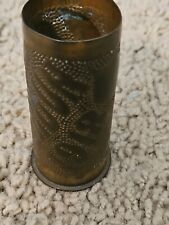
1918 Trench Art WWI Shell Casing Verdun Brass Flowers Leaves War Battle $170.00
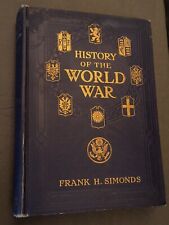
Antique Book 1918 WWI History Of The World War Military History 1st Edition $79.95
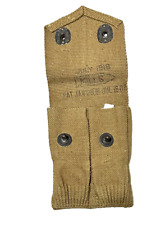
ANTIQUE UNISSUED NEW OLD STOCK 1918 WWI 45 CAL. MAGAZINE AMMO POUCH COLT $20.00
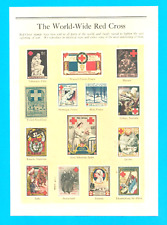
1918 RED CROSS STAMPS from WWI The Great War art print $18.99

1918 EVER READY shaver The Great War WWI soldier shaving antique PRINT AD razor $12.99
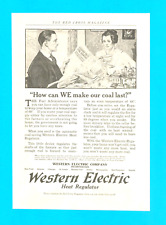
1918 Western Electric Company heat with coal antique PRINT AD The Great War WWI $12.99
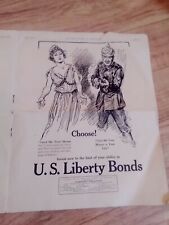
1918 WWI Liberty Bonds Print Ads Original $35.00

1918 WWI G&K LEATHER PISTOL HOLSTER $40.00
|